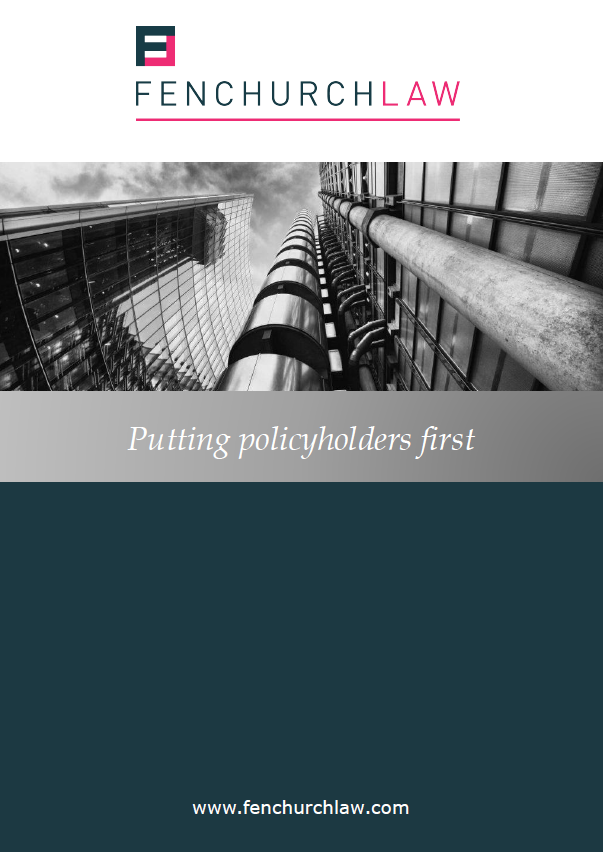
Cladding PI Notifications – A View from Down Under
A recent decision in the Federal Court of Australia provides guidance on broad professional indemnity insurance notifications for external cladding works, confirming that a wide problem may be validly notified with reference to appropriate supporting information – MS Amlin Corporate Member Ltd v LU Simon Builders Pty Ltd [2023] FCA 581.
A full copy of the judgment can be found here.
The Policies
LU Simon Builders Pty Ltd and LU Simon Builders (Management) Pty Ltd (the “Policyholders”) operated a construction and project management business. Professional indemnity (“PI”) insurance was arranged through local Australian and London placing brokers for the 2014/2015 period, including excess layers.
The insuring clause provided cover for civil liability arising from claims first made against the Policyholders during the policy period, and reliance was placed upon section 40(3) of the Insurance Contracts Act 1984, whereby an insurer is also liable for claims made after expiry of the period of insurance:
“where the insured gave notice in writing to the insurer of facts that might give rise to a claim against the insured as soon as was reasonably practicable after the insured became aware of those facts but before the insurance cover provided by the contract expired”.
This creates a statutory mechanism similar to the common position in the English PI market, where claims made covers are frequently extended to allow notification of circumstances known to the policyholder that may give rise to a claim: if notification of circumstances is made during the policy period then the third party claim itself – even though it may actually come in at a later date – is deemed to have been made during that same policy year.
The Claims
In 2019 proceedings were commenced against the Policyholders by developers and owners of Atlantis Towers in Melbourne, alleging that unsuitable ”Alcotex” aluminium composite panels (“ACP”) were used as cladding for the building (the “Atlantis Claims”). The Policyholders sought indemnity for the Atlantis Claims, and excess layer insurers applied for a declaration that the PI policies would not respond.
The Atlantis Claims came about following investigation by the Metropolitan Fire Brigade (the “Fire Brigade”) and Municipal Building Surveyor for the City of Melbourne (the “Municipal Surveyor”) into a fire on 25 November 2014 at Lacrosse Tower, another building constructed by the Policyholders. The investigation found that ACP at Lacrosse Tower (Alucobest) was not compliant with the Building Code of Australia, and had contributed to the rapid spread of fire.
The Victorian Building Authority (the “Building Authority”) subsequently commenced an investigation and audited around 170 high-rise buildings in Melbourne. The Building Authority concluded that ACP on the Atlantis Tower (Alcotex) was combustible, and Building Orders were issued requiring replacement.
The Notifications
The dispute centred around two notification emails headed “Potential Claim”, sent to insurers in May 2015, neither of which identified Atlantis Towers or the Alcotex brand of ACP which had been used in its construction.
The first notification email referred to: “a notification of circumstances that may result in a claim under [the Policyholders’] Policy … Really most of the noise is around the press release … No formal claim has been made against [the Policyholders] at this point in time”.
The email attached: (1) a newspaper article dated 28 April 2015, referring to the Building Authority’s investigation into the Policyholders’ building practices, to identify whether non-compliant ACP had been used elsewhere; and (2) a document headed “Lacrosse Apartments – Docklands” including commentary from the managing director of the Policyholders in relation to ACP having been widely used in Australia for decades with “no like product passing the test for combustibility”, and referencing a potential class action by owners of Lacrosse Tower.
The second notification email attached a report on Lacrosse Tower by the Fire Brigade entitled “Post Incident Analysis Report”, together with the design and construct contract. The report stated that the Fire Brigade was not aware of any competitor aluminium / polyethylene panel product which had satisfied combustibility tests, and expressed the Fire Brigade’s firm opinion that ACP without appropriate accreditation / certificates of conformity represented an unacceptable fire safety risk, given the need to prevent similar incidents. The Fire Brigade’s report contained hyperlinks to four media reports, suggesting that the Building Authority’s audit had revealed a pattern of poor compliance with regulations, and that “buildings may be a risk to occupants in a fire situation”.
The Decision
His Honour Justice Jackman concluded that the notification emails clearly pointed to a wider problem than one confined to the Lacrosse Tower, or to Alucobest products. The reference to broader investigations, alongside the proposal form statement that 100% of the Policyholders’ work in the last financial year related to high-rise buildings, had the effect of conveying to insurers that there was (at least) a real and tangible risk of the Policyholders facing claims for rectification of that aspect of its work on this building, and on others that it had constructed.
Applying principles discussed in P&S Kauter Investments Pty Ltd v Arch Underwriting at Lloyd’s Ltd [2021] NSWCA 136, the Court acknowledged notification need not be given in a single document, nor the likely claimant(s) identified. Information included by hyperlinks formed part of the notification, since the task of clicking “is not significantly more demanding than turning a physical page” – provided that the link is to a specific page or document. Opinions expressed by public authorities with appropriate expertise (such as the Fire Brigade or the Municipal Surveyor) were held to be capable of constituting “facts” for the purpose of s.40(3), despite the contrary Federal Court decision in Uniting Church (NSW) v Allianz Australia Ltd [2023] FCA 190.
Given a clear causal connection between investigations reported in the notification emails, and later proceedings against the Policyholders, the Court concluded that insurers had been notified before expiry of the policies of facts giving rise to the Atlantis Claims, within the meaning of s.40(3).
English Law
Australia is a common law jurisdiction originating from the English legal system, applying statutory provisions enacted by its various states and federal governments.
Policyholders are similarly able to make “hornets’ nest” notifications under English law, i.e. general notification of a problem even where the cause of the problem or its potential consequences are not yet known (HLB Kidsons v Lloyd’s Underwriters [2008]; Kajima UK Engineering v The Underwriter [2008]; Euro Pools plc v RSA [2019]).
The operation of notification of circumstances provisions under liability policies is often contentious, and careful consideration should be given to the content and timing of notices to insurers, with supporting documents, to maximise the scope of cover. Policyholders should be mindful of precise wording in their PI policy conditions on the knowledge threshold for notifications (whether based on “may” or “likely to” give rise to claims language), and ensure that the trigger remains consistent between policy years and insurance layers where possible, in order to avoid potential gaps in cover.
Amy Lacey is a Partner at Fenchurch Law
Other news
Fenchurch Law strengthens coverage dispute team with Wilkes appointment
11 December 2025
Fenchurch Law, the leading international law firm for insurance policyholders and brokers, has appointed renowned…
You may also be interested in:
Archives
Categories
- Case Law
- Professional Risks
- Press Release
- Uncategorized
- The Good, the Bad and the Ugly
- Fenchurch Law Webinars
- Stonegate
- Newsletter
- Events
- Webinars
- Comparing German and English Insurance Law – A Series
- Construction Risks
- Operations
- Business Development
- Construction & Property Risks
- News
- International Risks
- Legislation
- Financial & Professional Risks



